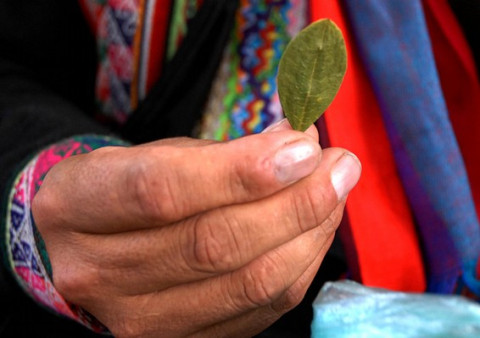Reconsidering Coca Leaf Scheduling: TNI Statement to the WHO-ECDD
The draft critical review report ‘did not reveal evidence of clinically meaningful public health harms associated with coca leaf use’, establishing it as ‘not associated with significant dependence or abuse potential’. Preliminary evidence regarding therapeutic properties is potentially of ‘great interest for future developments to establish their efficacy and safety for use in human medicine’. Those basic conclusions contradict the WHO’s 1950s justification for placing the coca leaf in Schedule I of the 1961 Single Convention, that coca chewing be defined as an ‘addiction’ similar to ‘cocainism’.

The one possible justification maintaining classification as a narcotic drug (be it in Schedule I or transferred to Schedule II), would be its ‘conversion’ into cocaine, the secondary scheduling principle established by the 1961 treaty. In 1992, without providing any new evidence or further explanation, the ECDD concluded that ‘the coca leaf is appropriately scheduled … since cocaine is readily extractable from the leaf’. As WHO’s coca review now discredits the preceding justification, the ECDD is obliged to scrutinize this secondary argument, taking into account the considerations below.
First, there is a difference between ‘conversion’ and ‘extraction’, and between ‘precursors’ and raw plant materials. The draft report notes cocaine can be produced from coca leaf by means of ‘solvent extraction’ rather than a process of ‘conversion’ which implies a chemical transformation of the precursor molecule. Control measures for coca cultivation and use of coca leaf for the illicit extraction and production of cocaine are covered in Articles 2.6, 2.7, 23, 26 and 27 of the Single Convention, and in Article 3.1 of the 1988 Convention. These provisions remain in force even if coca leaf is deleted from the schedules and no longer classified as a narcotic drug itself.
Second, the basic threshold for ‘ease of convertibility’, explained in the 2010 WHO Guidance, is that it be ‘practicable and profitable for a clandestine manufacturer to transform the substance in question into controlled drugs’. The draft report confirms that the ‘simplicity and profitability of extraction contribute to its role in illicit cocaine production’. This is applicable to large-scale practice of cocaine production close to cultivation areas, but certainly not to legal trade in coca products. Regarding price and volume, there is no way it could be ‘practicable and profitable’ to extract cocaine from retail quantities of coca tea or mambe powder on international markets.
Third, international controls are inconsistent regarding plants, alkaloids, precursors, extracts and preparations across the UN drug control treaty system. In contrast to the Single Convention, in the 1971 Convention there are no precursors or botanical raw materials containing psychotropic substances in its schedules. The ECDD should ensure that their conclusions about coca leaf are consistent with its previous ones particularly from reviews of khat and kratom, in which the WHO advised against placing them under international control; and consider in comparison the unscheduled ephedra plant despite its ephedrine alkaloids being controlled under the 1988 Convention as precursors for methamphetamine, scheduled under the 1971 Convention.
Finally, in 1992, the ECDD also ‘discussed the advisability of prohibiting under the international conventions plant products containing psychoactive substances that are traditionally used by indigenous populations’, and advised ‘that the social problems resulting from the prohibition of these products under international controls might outweigh any health benefits’. The WHO’s coca leaf recommendation should be coherent with its policy in defence of traditional medicine and Indigenous rights.
Martin Jelsma – TNI - 15 October 2025
Annex: The UN Coca Leaf Review and Indigenous Peoples’ Rights: Can the WHO Meet the Moment?


